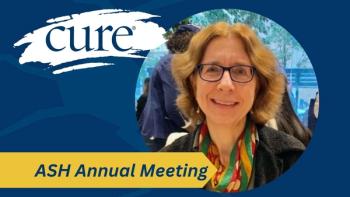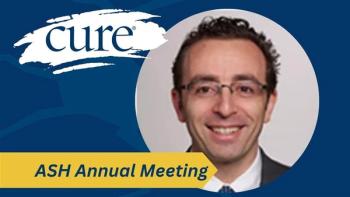
Advanced Care Planning Gives Patients ‘Control of Their Care When They Are Most Vulnerable’
Advanced care planning should be an ongoing discussion, explained an oncology nurse.
Advanced care planning (ACP) should be an ongoing process between patients with cancer and their care team, explained Denise Nicholson, advance care planning program manager at Gunderson Health System.
“I consider those to be a byproduct,” Nicholson said in a presentation on ACP as part of the 48th Annual Oncology Nursing Society (ONS) Congress on April 26 in San Antonio, Texas. She began by imploring the audience to think of ACP as more than “instructions” for an individual’s last days or hours.
Rather, the process should focus on putting the individual at the center of their own care. As she explained, ACP is not solely about how one wants to die; it defines by the parameters by which an individual wants to live. This can mean electing a family member or loved one to make medical decisions for the patient if they are suddenly unable to themself or deciding at what point they would like their health care team to stop attempting life-saving treatments.
It is important to keep in mind that these conversations are fluid, she added. An individual’s preferences and decisions may change, and the conversation does not need to happen all at once.
Understanding Advanced Care Planning
ACP is for all adults, whether they are perceived healthy or facing an illness. Ideally, this conversation should begin once a person reaches age 18 years.
Specifically, advanced directives outline what care a patient would or would not want to receive in various situations. It is often interpreted that ACP is only related to terminal illnesses, but the reality is accidents happen, Nicholson said. Even individuals who are young and healthy can unexpectedly find themselves in a situation where they cannot contribute to their own health care decisions.
“It gives individuals a voice and keeps them in control of their care at a time (when) they are most vulnerable,” Nicholson said. “It helps a medical team know how to care for a patient. Decisions made ahead of time help care go so much smoother.”
She asked the audience: If they found themselves in a situation where they were unable to speak for themselves, who would they want to be their voice?
In her experience, many patients have expressed that their spouse or their children understand their wishes. However, when all parties are made to sit down and discuss the directive, they often discover that they are not actually on the same page.
“What happens, happens,” is a phrase that Nicholson has heard from many of her patients. She noted that this statement could not be truer. ACP is powerful because it allows the patient to plan for what will happen instead of leaving the decision to other individuals.
Discuss Open-Ended Questions
Nicholson encouraged open-ended conversations between patients and providers. Examples are as follows:
- For your pancreatic cancer treatment, what would be unacceptable to you?
- What would you like to do with the time you have left?
- What would make your life no longer worth living for you?
Although she recognized that in Western culture discussion around end-of-life decisions often makes us unconformable, she encouraged that people should not be afraid to say dying or death. She shared that she makes a point to ask patients, “What kind of death would you choose?”
For example, Nicholson wants red wine on her lips, a rock in her hand and flameless candles present when she dies. Some may want a certain song to play. Others may want a priest present, or for a spiritual ritual to be performed.
“(An ACP conversation) is like peeling the layers of an onion,” she said. “Each individual is unique.”
Nicholson also encouraged nurses to “listen to learn.”
For example, if a patient says, “I don’t want to be a vegetable,” it’s important that the patient defines a “vegetable.” Another similar example is when a patient says they do not want to be a burden.
When discussing concepts such as life support or feeding tubes, she always asks for clarity to ensure that she is on the same page as the patient.
At the conclusion of an ACP conversation, Nicholson encourages patients to discuss their takeaways with a loved one.
Final Points
Some individuals are very matter of fact and do not want to dwell on the ACP conversation. They may want to fill out the forms right away and be done with it, and that is OK too, Nicholson said.
Nicholson concluded that there are several different ACP forms with several different names that an individual can choose to fill out.
After an ACP conversation, it is important for the medical team to record those wishes so that the information is readily accessible.
Finally, she stressed that ACP conversations are fluid in nature and often need to be done in stages. She encouraged patience in figuring out wants and needs and communicating them with their health care team.
“It is never too late, until it is,” she said.
For more news on cancer updates, research and education, don’t forget to





